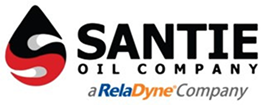Many industries rely on hydraulics, which use incompressible fluids to apply force and lift, adjust, or restrain (brake) machinery. Fluid-powered forces can move components of heavy machinery with precision. Read on to learn about seven common industrial hydraulic applications.
Excavation
Heavy machinery relies on hydraulics to maneuver working elements that dig, lift, and deposit materials during construction and road repairs. Excavators use hydraulics to manipulate the boom, arm, and bucket, to dig in the targeted spot, lift debris, and deposit it into dump trucks or debris piles to be hauled away later.
Drill Rigs
Hydraulics power the vertical movement of drill rigs for energy and mineral exploration. The working parts of the drill assembly use hydraulic power to direct the drill to make holes to extract or identify energy and mineral sources.
Aerospace
Planes and rockets use hydraulics to control flaps, brakes, steering, and landing gears. Hydraulics also assist in the opening and closing of heavy doors. Without functioning hydraulic systems, planes can’t ascend, descend, or turn properly. Hydraulics are a critical part of aviation safety and control, making aviation a common industrial hydraulic system application that passenger and cargo airlines rely on daily.
Trucking
When we think of trucks, we typically think of diesel fuel. But many types of trucks, from dump trucks to tank trucks, use hydraulics to raise the bed or offload tanks.
Lifts
Auto shops use hydraulic systems to hoist vehicles overhead for repairs. Elevators use hydraulics to control ascent and descent. Waste management, shipping, and construction industries use lifts to move and store heavy cargo and materials.
Warehousing
Warehouse workers use forklifts to load, store, and move materials around. Forklifts depend on hydraulics to raise and carefully lower pallets of raw materials, canned foods, and just about anything else that can be stacked, racked, and stored.
Press Brakes
Without hydraulics, cutting and forming metal would be much more difficult. Press brakes rely on hydraulics to cut, stamp, bore, and bend metal with forces that manual processes can’t generate.
All hydraulic equipment requires the replenishment of fluids from time to time, and hydraulic lubricant keeps pumps, pistons, and other moveable working parts in heavy equipment and machinery in good condition. With proper lubrication, machinery powered by hydraulics can provide years of service in heavy work that couldn’t get done without the forces of fluid power behind it.

